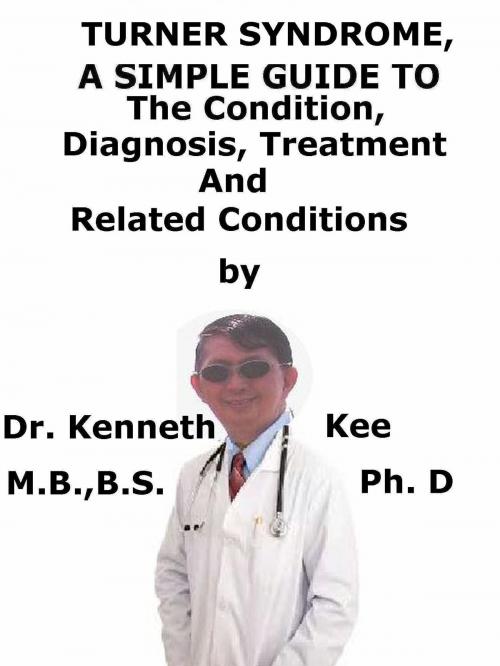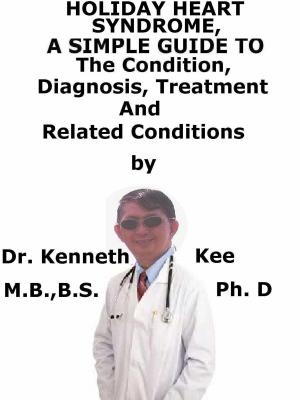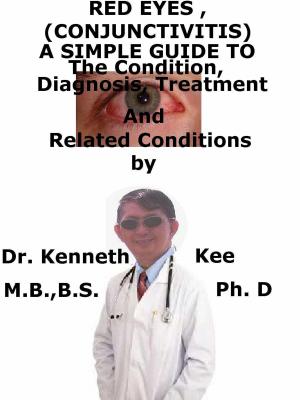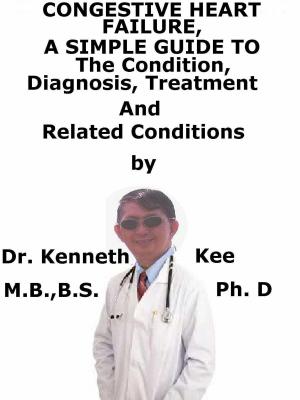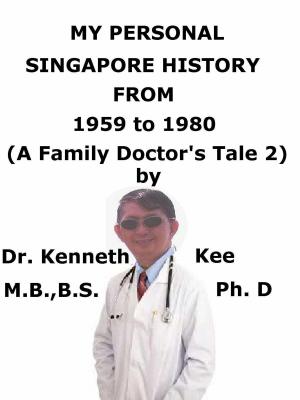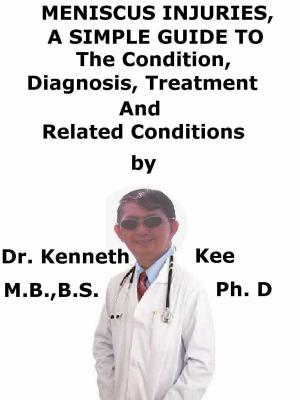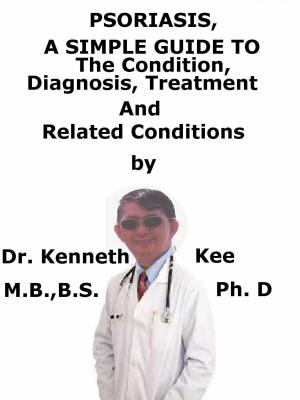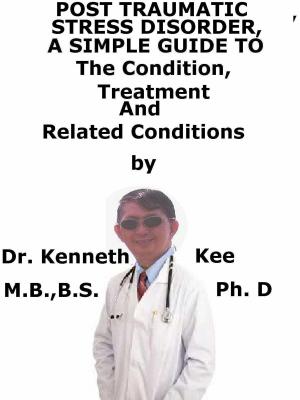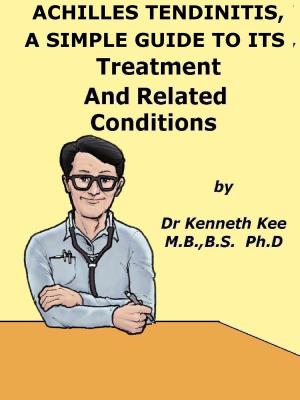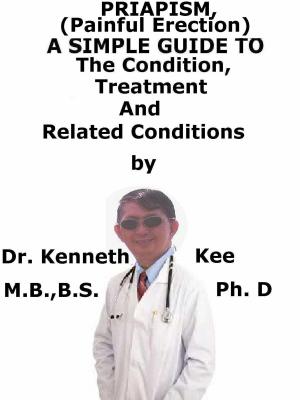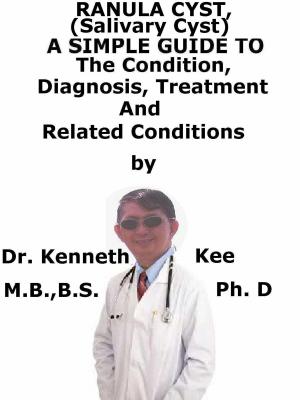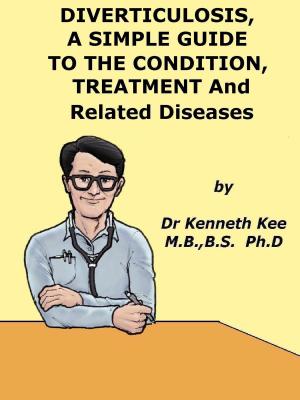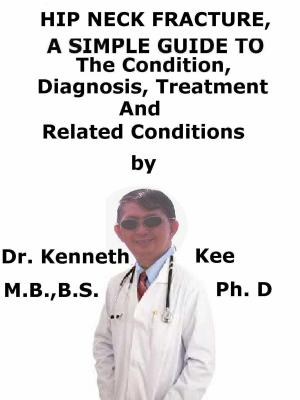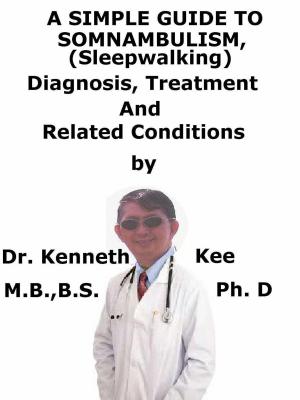Turner Syndrome, A Simple Guide To The Condition, Diagnosis, Treatment And Related Conditions
Nonfiction, Health & Well Being, Health, Ailments & Diseases, Genetic, Women&| Author: | Kenneth Kee | ISBN: | 9781370500420 |
| Publisher: | Kenneth Kee | Publication: | April 24, 2017 |
| Imprint: | Smashwords Edition | Language: | English |
| Author: | Kenneth Kee |
| ISBN: | 9781370500420 |
| Publisher: | Kenneth Kee |
| Publication: | April 24, 2017 |
| Imprint: | Smashwords Edition |
| Language: | English |
Turner Syndrome is an inherited disorder of the sex chromosome in which one of the X chromosomes is missing (XO)
It happens only in females and is linked with amenorrhea and infertility.
Turner syndrome is a rare genetic disorder.
Turner syndrome can be also described as loss or abnormality of the father’s X chromosome in at least one cell line in a phenotypic female.
In most affected girls, the normal X chromosome is maternal in origin.
Evident physical signs (e.g., neck webbing) involve only about 20% of girls with Turner syndrome
Many girls with Turner syndrome have few problems other than short stature and ovarian failure
Short stature or a poor growth rate can be the first manifestation of Turner syndrome
Turner syndrome should be investigated in any girl with short stature or primary amenorrhea.
Practically all affected women are infertile but some are able to conceive with assisted reproduction
Turner syndrome is linked with a higher risk of:
1. Congenital heart defects,
2. Congenital lymphedema,
3. Renal malformations,
4. Hearing loss (conductive or sensorineural),
5. Osteoporosis,
6. Obesity,
7. Diabetes and
8. An atherogenic lipid profile.
Intelligence is normal but there may be disorders of nonverbal, social and psychomotor skills.
Cause:
It is an inherited disease produced by a missing X sex chromosome (XO) during cell division
In Turner syndrome, the cells have lost all or part of an X chromosome.
The disorder only happens in females.
Most often, a female with Turner syndrome has only 1 X chromosome.
Others may have 2 X chromosomes, but one of them is not complete.
Occasionally, a female has some cells with 2 X chromosomes but other cells have only 1.
Symptoms:
1. Short stature females
2. Distinct facial features with small jaws, ptosis, low set ears and short neck
3. Broad shield like chest with small nipples
4. Lymphedema of extremities frequent sign in newborns
5. Amenorrhea and infertility
6. Short fourth metacarpals
7. Wide carrying angle of arm
8. Autoimmune thyroid disease
9. Abnormal organs -horseshoe kidneys
10. Heart disorders like co-arctation of aorta and bicuspid aortic valves
There is a higher incidence of autoimmune disorders, mainly:
1. Autoimmune thyroid disease (both Hashimoto's thyroiditis and Graves' disease),
2. Celiac disease,
3. Inflammatory bowel disease,
4. Alopecia areata and
5. Type 1 diabetes mellitus.
Diagnosis of Turner Syndrome is often based on:
1. Medical examination of appearance
2. Buccal smear for cells to test for chromosomes (seldom done now)
3. Karyotyping (test to examine number and type of chromosomes in a sample of cells)
4. Blood test for estrogen (low), follicle stimulating hormone (raised), luteinizing hormones (raised or normal)
5. Thyroid level may be low
Blood TSH is high
6. X-rays for cardiac and urinary abnormalities
Treatment
Turner syndrome is clearly a lifelong disorder and, even though most patients are healthy, they are vulnerable to a number of chronic disorders.
Disorders revolve around growth, puberty, fertility and general health.
Short stature is managed in early childhood with growth hormone therapy.
Estrogen and other hormones are often begun when the girl is 12 or 13 years old.
These help stimulate the growth of breasts, pubic hair, other sexual features, and growth in height.
Estrogen therapy is given through out life until the age of menopause.
Fertility may be obtained with oocyte donation, and gamete or embryo transplant.
Women with Turner syndrome who wish to become pregnant may think about using a donor egg.
Turner syndrome women need care for:
a. Keloid formation
b. Hearing loss
c. High blood pressure
d. Diabetes
e. Thinning of the bones
TABLE OF CONTENT
Introduction
Chapter 1 Turner Syndrome
Chapter 2 Causes
Chapter 3 Symptoms
Chapter 4 Diagnosis
Chapter 5 Treatment
Chapter 6 Prognosis
Chapter 7 Lynch Syndrome
Chapter 8 Klinefelter Syndrome
Epilogue
Turner Syndrome is an inherited disorder of the sex chromosome in which one of the X chromosomes is missing (XO)
It happens only in females and is linked with amenorrhea and infertility.
Turner syndrome is a rare genetic disorder.
Turner syndrome can be also described as loss or abnormality of the father’s X chromosome in at least one cell line in a phenotypic female.
In most affected girls, the normal X chromosome is maternal in origin.
Evident physical signs (e.g., neck webbing) involve only about 20% of girls with Turner syndrome
Many girls with Turner syndrome have few problems other than short stature and ovarian failure
Short stature or a poor growth rate can be the first manifestation of Turner syndrome
Turner syndrome should be investigated in any girl with short stature or primary amenorrhea.
Practically all affected women are infertile but some are able to conceive with assisted reproduction
Turner syndrome is linked with a higher risk of:
1. Congenital heart defects,
2. Congenital lymphedema,
3. Renal malformations,
4. Hearing loss (conductive or sensorineural),
5. Osteoporosis,
6. Obesity,
7. Diabetes and
8. An atherogenic lipid profile.
Intelligence is normal but there may be disorders of nonverbal, social and psychomotor skills.
Cause:
It is an inherited disease produced by a missing X sex chromosome (XO) during cell division
In Turner syndrome, the cells have lost all or part of an X chromosome.
The disorder only happens in females.
Most often, a female with Turner syndrome has only 1 X chromosome.
Others may have 2 X chromosomes, but one of them is not complete.
Occasionally, a female has some cells with 2 X chromosomes but other cells have only 1.
Symptoms:
1. Short stature females
2. Distinct facial features with small jaws, ptosis, low set ears and short neck
3. Broad shield like chest with small nipples
4. Lymphedema of extremities frequent sign in newborns
5. Amenorrhea and infertility
6. Short fourth metacarpals
7. Wide carrying angle of arm
8. Autoimmune thyroid disease
9. Abnormal organs -horseshoe kidneys
10. Heart disorders like co-arctation of aorta and bicuspid aortic valves
There is a higher incidence of autoimmune disorders, mainly:
1. Autoimmune thyroid disease (both Hashimoto's thyroiditis and Graves' disease),
2. Celiac disease,
3. Inflammatory bowel disease,
4. Alopecia areata and
5. Type 1 diabetes mellitus.
Diagnosis of Turner Syndrome is often based on:
1. Medical examination of appearance
2. Buccal smear for cells to test for chromosomes (seldom done now)
3. Karyotyping (test to examine number and type of chromosomes in a sample of cells)
4. Blood test for estrogen (low), follicle stimulating hormone (raised), luteinizing hormones (raised or normal)
5. Thyroid level may be low
Blood TSH is high
6. X-rays for cardiac and urinary abnormalities
Treatment
Turner syndrome is clearly a lifelong disorder and, even though most patients are healthy, they are vulnerable to a number of chronic disorders.
Disorders revolve around growth, puberty, fertility and general health.
Short stature is managed in early childhood with growth hormone therapy.
Estrogen and other hormones are often begun when the girl is 12 or 13 years old.
These help stimulate the growth of breasts, pubic hair, other sexual features, and growth in height.
Estrogen therapy is given through out life until the age of menopause.
Fertility may be obtained with oocyte donation, and gamete or embryo transplant.
Women with Turner syndrome who wish to become pregnant may think about using a donor egg.
Turner syndrome women need care for:
a. Keloid formation
b. Hearing loss
c. High blood pressure
d. Diabetes
e. Thinning of the bones
TABLE OF CONTENT
Introduction
Chapter 1 Turner Syndrome
Chapter 2 Causes
Chapter 3 Symptoms
Chapter 4 Diagnosis
Chapter 5 Treatment
Chapter 6 Prognosis
Chapter 7 Lynch Syndrome
Chapter 8 Klinefelter Syndrome
Epilogue
